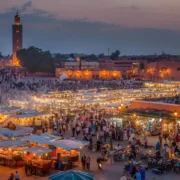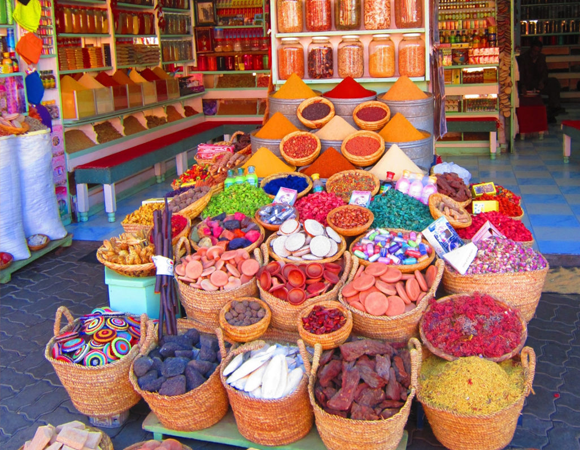
Best Time of Year to Visit Morocco
Morocco stretches from the Mediterranean coast to the dunes of the Sahara, with lots of varied geography in between. As a result, climate and weather vary greatly depending on where you spend your time. September through May works well for most travelers, and those prioritizing a trip to the desert should stick to winter and spring. If you’re traveling in summer months and want to beat the heat, Tangier in the north and Essaouira on the Atlantic Seaboard are great options.
Fast Facts
- Mid-September through the end of May is the best time to visit Morocco
- In March and April, days are warm, peaks are snowy, and wildflowers fill the plains.
- Avoid the Sahara from mid-June to mid-September when temperatures are high
- Nights can be surprisingly cool in the mountains and desert at any time of year
When is the best time to visit Morocco?
Morocco can be visited year-round as long as you take into account the climate of its different regions and plan your trip accordingly. The Sahara, for example, should be avoided from June to September when temperatures can be searingly high. But this is a great time for visiting the imperial cities of Northern Morocco, the Atlantic Coast, or hiking at high altitude in the Atlas Mountains. Pack accordingly, and you can comfortably visit at any time of year. For trip planning inspiration, check out our tours and itineraries.
Northern Morocco: Mediterranean Climate All Year

Tangier has a Mediterranean climate with warm/hot summers with much sunshine and little rain. July is the warmest month, where the highest daytime temperatures are around 83°F/28°C. Winters (October to March), are mild and warm but cloudier. January is the coldest month with average highest day temperatures of around 60°F/16°C.
Marrakech & South Central Morocco: Best in Late Winter, Spring, and Fall

Marrakech has a continental climate (far from the ocean). This means that overall rainfall amounts are low and hours of sunshine very high. July is the warmest month with average highest day temperatures of at around 98°F/38°C. October and November and March, April and May have very pleasant temperatures for the traveler. The coldest month is December with average highest day temperatures of around 65°F/19°C. At night, it can be quite cold in the mid-winter months. Winter is when most rain falls, October to March; November is the wettest month.
Atlantic Seaboard: Best in Summer

Essaouira has a maritime climate given its proximity to the ocean. August is the warmest month with average highest day temperatures of at around 84°F/29°C. January is the coldest month with average highest day temperatures of around 65°F/18°C. Winter is when most rain falls. November is by far the wettest month. The months of June and July have very low rainfall amounts.
Moroccan Sahara: Best in Late Fall & Early Spring

Merzouga has a hot desert climate. There is a surprising temperature variation, however, between summer and winter. August is the warmest month with average highest day temperatures of at around 104°F/40°C. December is the coldest month with average highest day temperatures of around 60°F/15°C. March, April, and May along with October and November are very pleasant months for temperatures.
Rainfall amounts are low throughout the year. However, there can be the occasional rainy day and November has the greatest chance of this. On very hot days, there can be a risk of heavy convectional storms but they are usually short-lived.
Last Minute Deals
- Quality5
- Location5
- Amenities5
- Services5
- Price4
Guided Tour of Marrakech - Walking Tour Marrakech
- Quality4
- Location4
- Amenities4
- Services2
- Price5
The Ultimate 6 Days Marrakech to Sahara, Merzouga & Todra Gorges Adventure
- Quality5
- Location5
- Amenities5
- Services5
- Price4
Sunset Safari: Experience a Gentle Camel Ride near Agadir
- Quality5
- Location5
- Amenities5
- Services5
- Price4
Southern Coast Escape: Book Your Sidi Ifni & Mirleft Day Trip from Agadir
- Quality4
- Location4
- Amenities4
- Services2
- Price5










